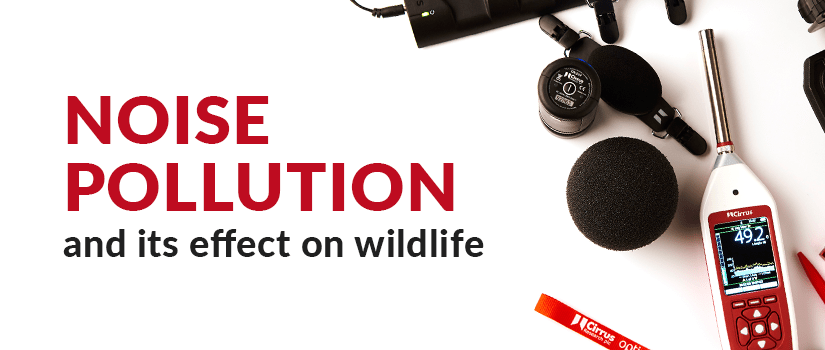

More than a decade ago, Morris Animal Foundation-funded researchers conducted a study on ambient noise and its effects on seahorses living in aquaria. Researchers learned that while seahorses have poor hearing abilities, the average ambient noise, including tank equipment noise, is audible to these animals. The team suspected that long-term exposure to tank-related noise leads to chronic stress in seahorses. Their data confirmed changes associated with noisy tank living, from changes in seahorse behavior to weight loss to changes in white blood counts indicating stress. The findings from this study led to recommendations and guidelines for tank soundproofing for public and home aquaria that now provide a better sensory environment for captive aquatic animals. Fish lovers may have noticed how pumps and filtration systems are much quieter than a decade ago, thanks to studies like this. Just like aquaria, noisy zoo environments also may inadvertently increase stress in captive animals. This is especially problematic for animals in conservation and restoration programs. One Morris Animal Foundation-funded research team is studying how the acoustic environment of zoos alters frog vocalizations, and how this exposure impacts the welfare and wild release success of these animals. Frogs are facing an extinction crisis with more than 500 species listed as critically endangered. Captive breeding is key to saving many of these animals. If vocalizations of captive, breeding frogs are changing, this could impact how they will behave once released. Frog vocalizations are critical for establishing territories and finding a mating partner in the wild. If a frog can’t speak the same language as its wild counterparts, it’s possible that a frog’s ability to thrive in the wild may be comprised from the get-go. The research team is using their findings to build more acoustic-friendly shelters for breeding frogs and see if these shelters improve frog communication and reduce stress. They also hope their data will lead to recommendations and actions to reduce human-generated noise in zoo environments, that will in turn lead to more successful breeding and release of frogs and other animals.


The roads and skies of the UK have been quieter than ever during the lockdown. The peace and stillness has been remarkable – and many of us hadn’t experienced anything like it before. That we felt this way reveals just how used we’ve become to incessant background noise. Even while walking in the deep countryside, you can hear the faint thundering of motorways and the rasping of jet engines. There is emerging evidence that noise pollution is bad for our health. But what about how noise pollution might be affecting the natural world? Well, luckily, academic interest is growing in this topic, with many scientists and researchers now investigating how noise might be impacting various species. So what sort of noise is involved, which animals are affected, and how?
Equally, certain intentionally-made sounds are also seen to be causing problems – these include acoustic deterrents used in some fishing activities, and the loud pulses used for geological surveys of ocean beds, during oil & gas exploration. Shipping is the most widespread cause of underwater noise – with propellers creating extremely loud cavitation noise, which can travel hundreds of kilometres through water.
Many animals use sound to gather information and to communicate information. They use might use sound to navigate their environment, to find mates, to challenge rivals, or to warn other members of a group about danger – to name just a few examples. So, if an animal cannot hear certain sounds, or is unable to make their sounds heard by others in a group, this could be threatening to an animal’s survival. The great tit – which can be seen in gardens across the UK – uses ‘mobbing’ calls. These calls are sounded by a great tit if they spot a predator, to ‘call’ together other members of their group – which would offer greater protection against that predator. Traffic noise from roads unfortunately drowns out many mobbing calls, which mean the birds cannot communicate a threat. Therefore their chances of survival are lower. This might explain why some animals’ stress levels rise when exposed to lots of background noise.
Researchers have observed that certain animal species change their behaviour in response to high background noise levels, to ‘get around’ the problem. Some birds change the volume or pitch of their calls or songs, while other birds change the timing of calls or songs, to avoid times of day which have the highest noise pollution levels. But there are downsides to altering behaviour like this. Animals might risk getting themselves noticed by a predator, or not communicating important information to other individuals of their species.
Luckily, noise is something that can be quickly addressed, and changes can have immediate effects. Reducing engine noise from transport, for instance, can be beneficial, as can measures to reduce noise around airports. Companies and scientists are now collaborating to create new technologies and materials which make less noise – such as quieter road surfaces. When it comes to marine noise pollution, engineers are working on designing ship propellers that create far less cavitation that typical propellers. As with many kinds of pollution, one of the simplest actions we can take is to change our daily behaviour. This could mean changes like requiring boats to slow down in particular areas, or to avoid sensitive areas like coral reefs, or fish spawning grounds. The key thing, though, is that there is a real lack of any historical research into this issue. We barely have any information about the sheer extent to which noise is affecting our wildlife. So a crucial change we must make in this area, is to address this huge gap in our knowledge.